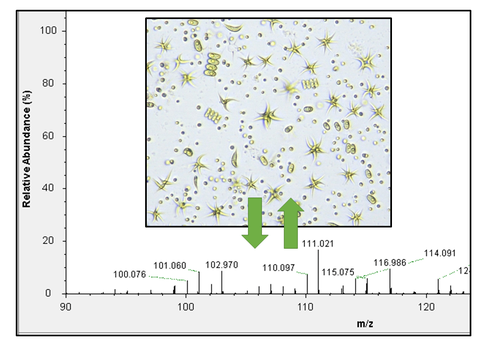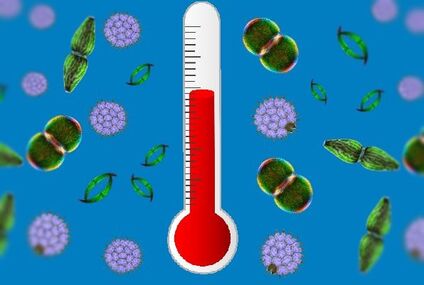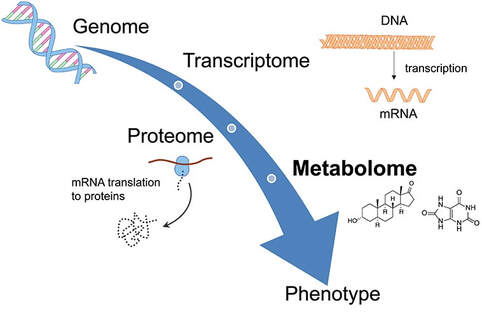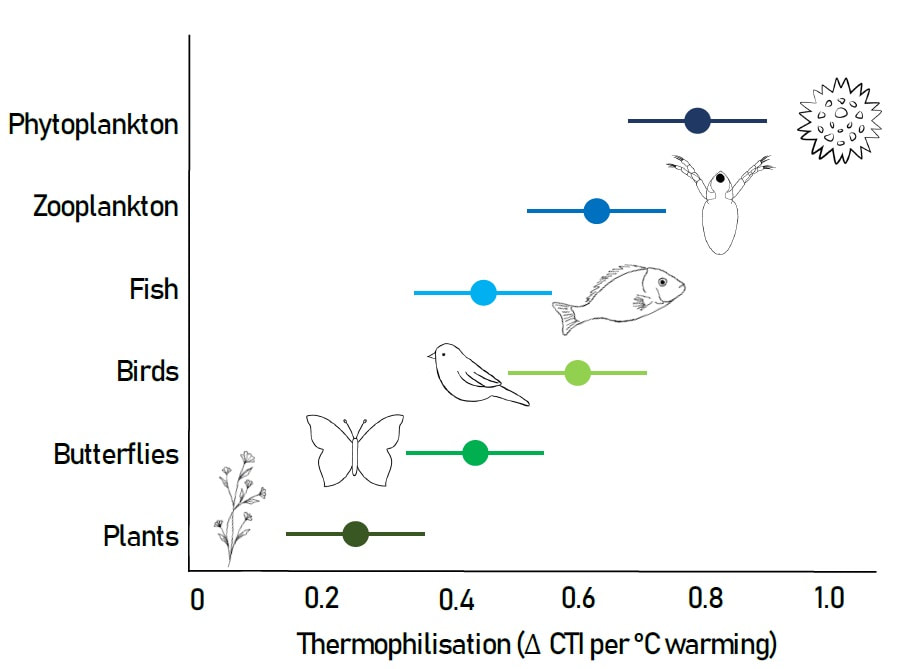Current projects

The importance of extracellular metabolites for phytoplankton diversity and productivity
Phytoplankton play a vital role in aquatic ecosystem functioning, and their physiological traits allow them to rapidly sequester atmospheric carbon, providing a potentially sustainable source of food, fuel, and bioproducts. Despite the importance of phytoplankton, we still struggle to understand the interacting mechanisms influencing the biodiversity and productivity of phytoplankton communities. One promising, yet understudied, mechanism of species interactions among phytoplankton is the influence of bioactive compounds that they release into the water. These secreted metabolites may have inhibitory effects – leading to competitive, interference interactions and reducing coexistence and productivity – or they may have facilitative effects – leading to increased coexistence and productivity. The overarching goals of this research project are to 1) characterize the chemical fingerprint that diverse phytoplankton species excrete into the water (i.e., the exometabolome); 2) link these chemical fingerprints to interactions among species; and 3) determine factors that cause changes in phytoplankton exometabolomes. This project will employ diverse tools, including high-throughput lab experiments, metabolomics, and experimental evolution. The interdisciplinary nature of this work calls for new collaborations; this project therefore leverages the complementary expertise of several working groups at Eawag and ETH (making new friends and doing science is fun!). We hope the results of this work will benefit both fundamental ecology, as well as industrial applications utilizing intra- and extra-cellular algal metabolites, in order to help solve some big problems via the aid of some tiny plankton.
This project is funded by Eawag and led by Dr. Patrick Thomas.
Phytoplankton play a vital role in aquatic ecosystem functioning, and their physiological traits allow them to rapidly sequester atmospheric carbon, providing a potentially sustainable source of food, fuel, and bioproducts. Despite the importance of phytoplankton, we still struggle to understand the interacting mechanisms influencing the biodiversity and productivity of phytoplankton communities. One promising, yet understudied, mechanism of species interactions among phytoplankton is the influence of bioactive compounds that they release into the water. These secreted metabolites may have inhibitory effects – leading to competitive, interference interactions and reducing coexistence and productivity – or they may have facilitative effects – leading to increased coexistence and productivity. The overarching goals of this research project are to 1) characterize the chemical fingerprint that diverse phytoplankton species excrete into the water (i.e., the exometabolome); 2) link these chemical fingerprints to interactions among species; and 3) determine factors that cause changes in phytoplankton exometabolomes. This project will employ diverse tools, including high-throughput lab experiments, metabolomics, and experimental evolution. The interdisciplinary nature of this work calls for new collaborations; this project therefore leverages the complementary expertise of several working groups at Eawag and ETH (making new friends and doing science is fun!). We hope the results of this work will benefit both fundamental ecology, as well as industrial applications utilizing intra- and extra-cellular algal metabolites, in order to help solve some big problems via the aid of some tiny plankton.
This project is funded by Eawag and led by Dr. Patrick Thomas.
The temperature dependence of competition in phytoplankton

The effects of warming on populations, communities and ecosystems are currently central topics of research in ecology and evolution, due to predicted climate change. However, warming will not occur in isolation to other types of abiotic environmental change. It is therefore important to consider how other gradients of environmental change may interact with warming. In aquatic environments, resource limitation and warming may increasingly occur together, because as waters warm they become increasingly stratified, preventing the mixing and resuspension of resources from the sediment. Resources and environmental temperature are both important drivers of metabolic processes, which have impacts across all scales of biological organization, from cells to ecosystems. The overarching goal of this project is to determine the extent to which warming alters essential resource requirements and elemental stoichiometry in freshwater phytoplankton, and in turn how such changes may influence competitive species interactions, community assembly and ecosystem functioning under warming. I aim to understand these impacts from a mechanistic perspective, addressing multiple levels of biological organization, from molecular to population, and community-level differences.
This project is funded by the SNSF for 4 years and will begin in the summer of 2021. Sarah Levasseur is the PhD student leading the ecological component of this project and Vanessa Weber de Melo is the postdoc leading the molecular and evolutionary work on the project.
This project is funded by the SNSF for 4 years and will begin in the summer of 2021. Sarah Levasseur is the PhD student leading the ecological component of this project and Vanessa Weber de Melo is the postdoc leading the molecular and evolutionary work on the project.
The impact of warming and resource limitation on phytoplankton metabolism –
leveraging high-throughput metabolomics

Resource availability and temperature are both independently among the most important drivers of biological processes across all scales of biological organization, from cellular metabolism, to population-level growth rates, community assembly, and even ecosystem-level fluxes of material and energy. We have separate mechanistic understandings of the influences of both temperature and resource availability on processes at all biological scales, but much less is known about how these two drivers interact. How does temperature influence different sub-cellular processes? Are all metabolic processes affected equally by warming or do some show greater temperature-sensitivity than others? If so, can we identify general rules about how particular metabolic pathways and their respective resource requirements are sensitive to temperature due to the activation energy of their metabolism? This project represents a first attempt at a comprehensive investigation of the interactive influences of temperature and resource availability on phytoplankton metabolism, and how this metabolic variation scales up to population-level dynamics.
This project is funded by Eawag and is led by Dr. Vanessa Weber de Melo ([email protected])
This project is funded by Eawag and is led by Dr. Vanessa Weber de Melo ([email protected])
Figure adapted from Steuer et al. 2019, Frontiers in Chemistry.
Warming-related community turnover in freshwater and terrestrial ecosystems
|
In this Blue-Green-Biodiversity project, funded by the ETH Domain, we are quantifying and comparing the rates of warming-related comunity turnover occuring in freshwater and terrestrial communities. In this project we are analyzing existing data from biodiversity monitoring projects, where the same sites are sampled repeatedly over time. This includes Swiss Biodiversity Monitoring data (BDM), National Lakes Assessment Survey Data (USA EPA), Alberta Biodiversity Monitoring data (ABMI), RivFishTime, BioTime, and other published time-series. We hope to understand whether cold-loving taxa are being replaced by warm-loving (thermophilic) taxa, or whether warm-loving taxa are simply addiing up. Additionally we hope to elucidate both environmental and biological drivers of this signal of "thermophilisation". Does body size determine the rate of turnover? Or are thermal niches and environmental variation inmportant drivers?
This project is a collaboration with Christian Rixen, and is led by Dr. Imran Khaliq ([email protected]). |
